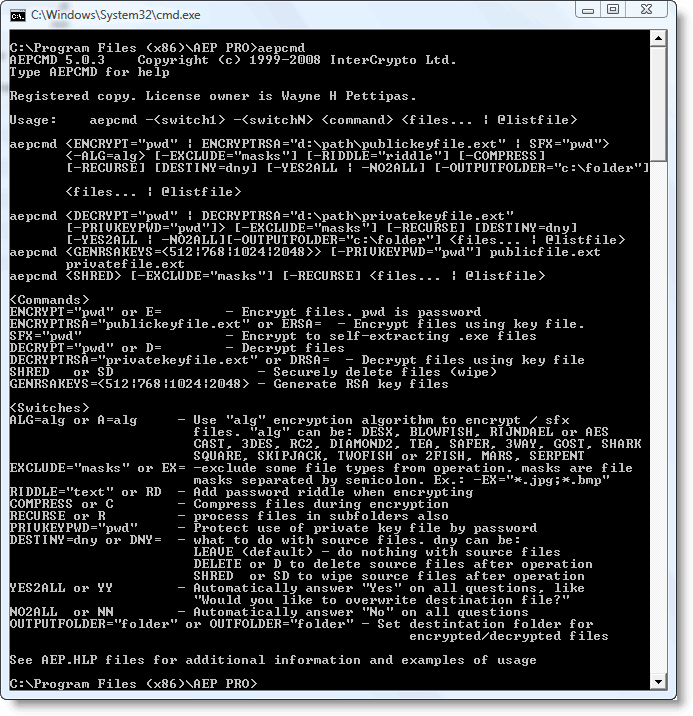

- #CREATING AN SSH PROXY DECRYPTION POLICY PDF#
- #CREATING AN SSH PROXY DECRYPTION POLICY UPDATE#
- #CREATING AN SSH PROXY DECRYPTION POLICY LICENSE#
The use of a CA-signed certificate is preferred because it simplifies SSL configuration. You can get certificate authority-signed certificates or generate self-signed certificates.
#CREATING AN SSH PROXY DECRYPTION POLICY LICENSE#
For more information about the WildFire XML API, see WildFire API Reference Guide.Ī WildFire license entitles a firewall to use the WF-500 appliance as a WildFire private cloud service. These content packages contain the same set of signatures.Ī license also enables users to programmatically submit files for analysis to WildFire using the WildFire XML API. There are two different content package formats for WildFire content updates: content packages for 7.1 and later, and content packages for 7.0 and earlier.
#CREATING AN SSH PROXY DECRYPTION POLICY UPDATE#
In previous versions, the content update time was 15 minutes. *The 5-minute WildFire content update time applies to PAN-OS 7.1 and later. WildFire licensed firewalls have access to those signatures, which enables near real-time protection against the latest threats detected anywhere in the world. WildFire can create new signatures EVERY 5 MINUTES. WildFire also can analyze JS, VBS, and PS1 files. The macOS Mach-O, DMG, and PKG files also are supported.
#CREATING AN SSH PROXY DECRYPTION POLICY PDF#
More file types may be submitted by a firewall for analysis.Īdditional file types are Microsoft Office files, PDF files, Java JAR and CLASS files, Adobe Flash SWF and SWC files, RAR, 7-Zip, Linux ELF, and Android APK files. Palo Alto Networks firewalls with a WildFire license are entitled to the standard subscription features and additional features. *Every type of Palo Alto Networks firewall with a Threat Prevention license has access to the standard WildFire subscription service. Firewall access to the WildFire Antivirus signatures is enabled by a WildFire license. You can schedule a firewall to check for new WildFire Antivirus signatures in real-time. You do not need to schedule PAN-DB downloads, because new URL information is downloaded dynamically by the firewall as needed.įirewall access to the PAN-DB URL Filtering database is enabled by a URL Filtering license.Īntivirus signatures are made available in real-time as content UPDATES TO THE WILDFIRE SIGNATURES content database on the firewall. URL updates are made available within 5 minutes as content updates to the PAN-DB URL Filtering database. You can schedule daily downloads of the Antivirus content database.įirewall access to the Antivirus content database is enabled by a Threat Prevention license. If you clink the link, the ACC tab opens, filtered by the user or group of users.Īntivirus signatures are made available within 24 to 48 hours as content UPDATES TO THE ANTIVIRUS content database. If User-ID matches a name in the WildFire log, the log's Email Header section contains a link. If User-ID technology is enabled, you can use the log information to quickly find and remediate the threats received by your users. If WildFire determines that a file attachment or URL link is malicious, it includes the email header information in the WildFire Submissions log that it returns to the firewall.

If you have a WildFire and PAN-DB license, your firewall can block access to newly discovered malware and phishing sites as soon as signatures are generated. If the URL link was found to be specifically a phishing website, the URL is added to the URL filtering phishing category in the PAN-DB database. If WildFire determines that a URL link included in the email is malicious, it quickly updates the Antivirus content database and the PAN-DB database to prevent further compromise of other hosts around the world. When WildFire detects a malicious file, it immediately creates a new antivirus signature that can be downloaded in real-time by Palo Alto Networks firewalls around the world.


 0 kommentar(er)
0 kommentar(er)
